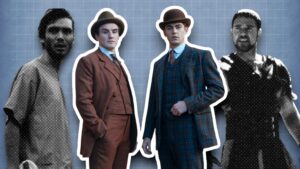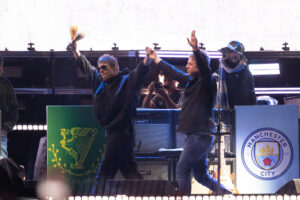Directors like Martin Scorsese and Quentin Tarantino are singular in every sense of the word. Their approach to the craft of film, their stylistic idiosyncrasies, even their own brands of big-screen ambition – you may be given a lifetime to recreate their works and still fall short with nothing more than a shallow parody.
The two recently sat down to interview one another, and it’s the stuff of dreams for any fan of cinema. Check out an abridged version of it below.
To read the full 7,000+ word transcript, click here.
On cutting The Irishman
Martin Scorsese: I just finalised the last cut on [The Irishman].
Quentin Tarantino: I get a situation when I kind of get down to that very, very end, where it’s like, “Let’s try this” and “Let’s try that.” But we get to that one spot and then I go home that night and I think, “You know, that was horrible. I’ve got to put it all back in the next day.”
MS: This has taken over three months because, in a funny way, this particular film I didn’t really screen that much because the last six months have been dealing with the de-aging.
QT: Yeah, yeah.
MS: And so we’re doing that and it’s quite intense. And so the ending is like two shots and I put another shot in. Then [I’m thinking], “Wait, does it need that medium shot? Maybe we would just stay with the wide shot.” So we tried that a few times, and then a couple of friends said, “Didn’t you have another shot in there?” I said, “Yeah, maybe that’s better.” But the thing was, that in so doing, it changes the length of the last wide shot.
QT: Well, let me ask you a question about the movie you’re doing now because you’re dealing with, I think, the longest canvas you’ve dealt with. It’s quite a few hours, right?
MS: Yeah.
QT: So how has that affected you as far as pacing is concerned?
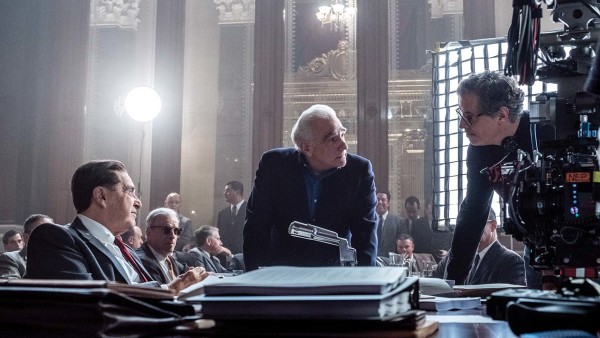
MS: Interestingly enough, I figured out the pacing on the page this time with the script that [Steven] Zaillian [wrote]. And then—this is a complex situation because of the fact that it’s being made with Netflix—it kind of stretches the length. In other words, I’m not sure if it had to be, for example, a two hour and 10-minute movie. Or could I have been at four hours?
QT: Right, yeah.
MS: I’m not certain as to the ultimate venue, so I made it pure in my head in a sense like, “What if it’s just a movie? What if it’s got to be as long as we feel or as short as we feel?” And, because the nature of the characters—basically, one character is telling the story in flashback at the age of 81.
QT: Uh-huh.
MS: And when you get to my age, Quentin—and you get a little slower, a little more contemplative and meditative—it’s all about thinking of the past and about [the characters’] perception of the past and so, by the third shot in the picture, I felt it in the editing. And I said, “Let’s see where it takes us and play to a few audiences and see how they tolerate it or not.” So we kept saying, “We should try this and that.” And also the nature of the computer-generated stuff we were doing gave us a certain pace.
QT: Yeah, yeah, okay.
MS: It’s a quieter pace. It still has violence to it, it still has humour. But it comes in different ways. It’s the old story: the more pictures you make, the more there is to learn.
On moving away from the “Hollywood”-style narratives
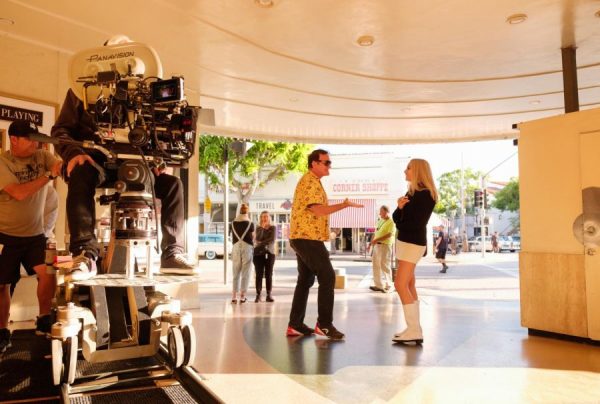
QT: You know, Marty, I’ll tell you an interesting story that I’m going through right now, and I thought it would lead to a very good question about you and movies, so let me go with this. Right now, I’m working on a book. And I’ve got this character who had been in World War II and he saw a lot of bloodshed there.
And now he’s back home, and it’s like the ’50s, and he doesn’t respond to movies anymore. He finds them juvenile after everything that he’s been through. As far as he’s concerned, Hollywood movies are movies. And so then, all of a sudden, he starts hearing about these foreign movies by Kurosawa and Fellini…
MS: Yeah, yeah, yeah.
QT: And so he’s like, “Well, maybe they might have something more than this phoney Hollywood stuff.”
MS: Right.
QT: So he finds himself drawn to these things and some of them he likes and some of them he doesn’t like and some of them he doesn’t understand, but he knows he’s seeing something.
MS: Uh-huh.
QT: So now, I find myself having a wonderful opportunity of, in some cases, re-watching and, in some cases, watching for the first time movies I’ve heard about forever, but from my character’s perspective. So I’m enjoying watching them but I’m also [thinking], “How is he taking it? How is he looking at it?” I always like to have a good excuse for just throwing down into a pit of cinema, so that brings me to ask you.
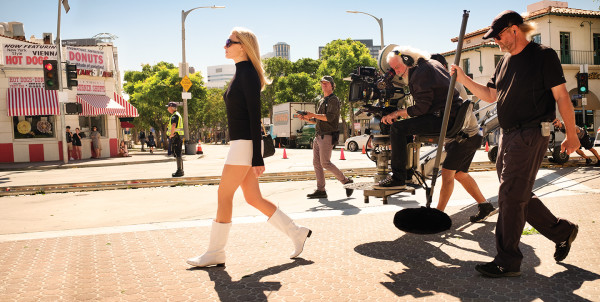
When was it for you that you started being lured away from what you considered Hollywood movies, and started becoming more adventuresome and going outside of your neighbourhood to actually see some of the other foreign films that you’d been maybe reading about?
MS: Well, it’s a great question because my first seven, eight years or so of my life we were in Corona, Queens. And then my father had to move back to Elizabeth Street, the street he and my mother were born on, because of some problems with the landlord.
And so I was thrown into what looked like the Dead End Kids [or] Lionel Rogosin’s On the Bowery, you know? [laughing] But prior to that, probably because of the asthma, [my parents] would take me to the movies all the time. So I saw Duel in the Sun, [that] was the first one. And then The Wizard of Oz, The Secret Garden, noirs like The Threat, [by] Felix Feist. Did you ever see that?
QT: Yeah, yeah. Loved The Threat.
MS: And so and [Robert Wise’s] Blood on the Moon. [William Seiter’s] One Touch of Venus. [We] had a little television set, a 16″ RCA Victor, and my grandparents would come over on a Friday night because they were showing Italian films for the Italian community. And the films were [Vittorio De Sica’s] Bicycle Thieves; [and Roberto Rossellini’s] Rome, Open City, and Paisan.
And so at 5 years old, I saw the reaction of my grandparents crying watching Paisan and I heard the language that was the same as they were speaking. And so I knew there was another kind of cinema, but it wasn’t the movies.
QT: Yeah.
MS: The first film I saw about Hollywood was [Billy Wilder’s] Sunset Boulevard.
QT: Right, yeah. [laughing] Very dark view of Hollywood.
MS: And so in a sense, they were codified—the truth was coming through a different code, and a different culture in a way. And it didn’t make them any less [important] from the European films I saw. But there was something that affected me when I saw those Italian films on that small screen that I never got past, and so that changed everything. That really gave me a view of the world, the foreign films. It made me curious about the rest of the world, apart from the Italian-American Sicilian community I was living in.
On getting the perfect shot
QT: I’m wrapping up my publicity tour on [Once Upon A Time In Hollywood] and I get questions like, “What was the most difficult scene for you to do?” I guess my real answer to that question usually is, if I’ve got a big set-piece I’m getting ready to do, and it’s Tuesday and we start it on Wednesday. And half of the reason I’m doing the movie is to do this sequence, which I’ve watched in my head so I see it. And now, if I don’t do it at least as good [as I see it] in my head, I will at least be the [only] one who knows that I didn’t do it.
MS: That’s right. Exactly.
QT: And it’s sort of like me testing my talent. Am I going to hit the ceiling on this one? Am I not as good as I think I am? And just before those days, those sequences, are always my most anxiety-filled, because I want them to be great and I’m at the bottom of the mountain right now and I’m looking up. I know once I start climbing, I’ll be fine. But I’ve got to start climbing. You have to get through that…
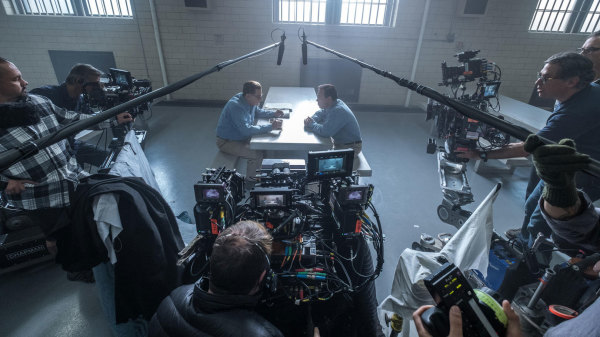
MS:[laughing] It’s true, and it’s total anxiety, bad dreams, everything. Get in there in the morning. Nasty, arguing, complaining. And then I want to get started.
QT: On those mornings, I am the nastiest. I am like, “Don’t bother me.”
MS: “Don’t come near me.” [laughing] I go outside the trailer. I’m very nice to everybody. I go in the trailer, there’s my AD and my producer, my assistant, and they get it. And then the DP comes and they all get it. And I usually complain about the traffic or there’s something wrong with my teeth or I don’t know what. “Can’t do a damn thing around here,” you know.
QT: Yeah.
MS: But in any event, it is that incredible thing that I always talk about: How do we get these concepts up here, out through all this equipment, through that lens, with the glass, and how do we get these dreams in our head? It’s so ephemeral. Once you start to make them physical, we may lose part of what we’re feeling up here, what we want to express. It’s very tricky.
QT: It’s an interesting double-edged sword which, I think, is why we have the anxiety, because, on the one hand, we’ve got this perfect movie in our head, but we don’t want that. We want to create something better than that because we don’t have those actors in our head.
MS: Exactly.
QT: You’ve got to constantly [be] making the cuts with the music and this and that and the audience oohing and aahing. Yeah, we can maybe do that. But it’s got to have a heartbeat.
MS: That’s right.
QT: But I still want all that oohing and aahing.
MS: Yeah, I know. I know, I know. And that’s the tension. That’s the incredible tension. And people say, “Well, if you hate it.” It’s not that I hate it.
QT: No, it’s not hating.
MS: It’s what we do.
QT: It’s actually the most invigorating thing in my life. But it doesn’t mean I don’t have trepidation.
MS: Oh, God. But you know, you’ve tried your best under the circumstances: with the DP, with your actors, with the weather, with how you’re feeling, with that location, with that shooting schedule. Unless, you know, some people go back and they reshoot a lot of stuff that they really need.
QT: Yeah, it seems like cheating to me. There is an aspect of, “No, you’ve got to pull it off in the time—either one that you said that you were going to [meet], or while everyone’s all there to do it. Even if you go over, it’s still…
MS: That’s right. It’s like a prizefight.
QT: Anybody could just do an unlimited thing…
MS: Yeah, no, a prizefight. You’ve got certain rounds. You’ve got to get in there and you’ve got to keep going and that’s it. I mean, I did shoot four extra days, I think, on The Departed. But what I did there, we were changing it so much in the middle of the film when we were shooting.
I kept working with [screenwriter] Bill Monahan and everybody rewriting stuff. It got so complicated that, at one point, my continuity person said, “Where do you want this new scene [that] just came in?” I said, “Put it in the middle with everything else. [laughing] I’ll figure it out later.” Sure enough, in the end it was like we were wrangling six wild horses, me and [editor] Thelma [Schoonmaker]. And then finally, we put it all together and we realized, “Okay, we need this and we need that.”
QT: Yeah, that makes sense, absolutely. I would have to think, though, that when it comes to what I was describing about leading up to that big section, feeling trepidation, I would imagine that you probably felt that way leading to the big action climax of Taxi Driver.
MS: It was every day on Taxi Driver. It was supposed to be a 40-day shoot and we went 45 days and they were very, very upset with us—really upset, angry, coming down, phone calls. It was a nightmare. And I must say, the energy you see in the frames—and I designed that whole shootout sequence very carefully—there was a good kind of anger that kept us going.
QT: Yeah.
MS: It took a lot out of us, but it was like being in a battle. It was fight, fight, fight, all the way through everything. It’s like everything you did was a battle to get the shots you wanted, how you wanted it. We were just trying to fight the time.
On Taxi Driver
MS: I thought nobody was going to see the film.
QT: So my question, in Taxi Driver, it’s like I’m sure the reason the movie, when it came to actually getting made because it is vaguely similar enough to Death Wish…
MS: [Producers] Michael and Julia Phillips, who had just won the Academy Award for The Sting, were really pushing the picture and working with the people at Columbia—at that time it was David Begelman—and they got it made. But [the studio] did not want to make it, and they made it very clear every minute.
QT: Oh, really. [laughing]
MS: Every day. And especially when I showed it to them, they got furious, and [it] also got an X rating. And I always tell the story that I had a meeting with Julia and myself and the Columbia brass. They looked at me. I walked in, ready to take notes. They said, “Cut the film for an R or we cut it. Now leave.”
QT: Jesus!
MS: I had no power at all. There’s nothing I could do. I came up against a monolith, and the only people who were able to pull it through were Julia and Michael. But meetings, talks, and then, of course, dealing with the MPAA to shave and trim a bit here and there.
Again, because, in doing the shootout, I didn’t know how else to present it. Maybe knowing that some of it was artifice, I didn’t realize the impact of the imagery. So I cut two frames and walked out. I mean, the violence, it’s catharsis, it’s so true. I felt it when I saw The Wild Bunch.
QT: Well, that’s an interesting thing. For instance, I feel a catharsis at the end of Taxi Driver.
MS: And the character, 80% or 90% of it was De Niro himself.
QT: Absolutely.
MS: With that look on his face and his eyes.
QT: It’s interesting because the thing about it is, you, De Niro and Schrader made a choice to look through Travis’ eyes. [De Niro] went inside of Travis. This is a first-person study. You’re seeing the world through his eyes. So if he’s a racist, you’re looking at the world through the view of a racist.
MS: Right, exactly.
https://www.youtube.com/watch?v=vPd9PT9lqQI
QT: Nevertheless, though, in Travis’ one-against-all stand against the pimps, I’m on Travis’ side. I mean, if we’re not supposed to root for him even a little bit, then there would be no point in making the prostitute underage.
MS: No, you’re right, that’s something that Schrader had in that script with her being underage, and Harvey improvised some of those lines about, you know, when Bob goes up to him in the doorway on 13th Street and says, ‘I’m hip,’ but Harvey goes—
QT: “Yeah you don’t look it.” I’ve got to say, I love that movie and I love that sequence in particular. Usually, if you’re talented enough, you get enough happy accidents you can never count on, so it all balances. But I think one of the great ones to me in the history of cinema is Harvey Keitel’s Sport flicking that cigarette off of Travis and you see an explosion of sparks.
MS: The sparks. Harvey did it. “Bang!” You know, “Go back to your fucking tribe.” You are so right about that, you know, because I grew up in places where I saw that happen in gatherings or a dance or something, and a fight breaks out. Before it breaks out, there’s always that cigarette. A spark. “Oh, here we go.” It’s one of those [situations] where you know it’s going to be a war and that’s the signal, you know.
On Inglorious Basterds & Once Upon A Time In Hollywood
QT: From time to time, if I’m in a really cool cinema bookstore, I like picking up a critical essay book on a director that I haven’t watched their films that much. And I’ll just kind of start reading about them and that will lead me down the road to another filmmaker’s work.
And so I was in Paris for our one weekend of shooting in France for Inglourious Basterds, and they had this wonderful cinema bookstore by Rue Champollion, where all the little cinemas are, and I hadn’t watched a lot of Josef von Sternberg’s movies. So I picked up one book about him and I liked it so much I got another book. I eventually got his autobiography, which I thought was hysterical. I don’t believe a word of it, but it’s very funny.
MS: [Laughing] I know, I know.
QT: Not a word. So I started watching some of his movies, and I was actually kind of inspired by his art direction.
MS: Yes.
QT: So I started, and now I do it at least a couple of times per movie, but on Inglourious Basterds, it was set up to do this Josef von Sternberg shot where you take all of the art direction and put it in front of the camera. And you dolly shot through the art direction as you follow your lead character—all the candles and the glasses and the clocks and the lights and just create one big line and then put a track line in there and then have your character go like this. So that is officially a Josef von Sternberg shot.
MS: I have a thing with tracking parallel to the action—just tracking it, like four people are standing there. Instead of tracking this way, it just goes straight this way and I think it comes from… there’s a scene in Vivre Sa Vie where the guy says, “I want a Judy Garland record,” and she goes across the record store to find the record and then the camera just comes back with her.
There’s an objectivity to it that is like a piece of music really, like choreography, but also the objectivity of this, I should say the state of their souls in a way—it doesn’t want to get too close.
QT: Yeah.
MS: But the one I really tried to—I tried to capture it in many films. I can’t do it but it doesn’t matter. It’s the fun of doing it. There’s one shot in [Hitchcock’s] Marnie where she’s about to shoot her horse. And it’s an insert. And it’s her hand with a gun and the camera is on her shoulder and it’s running. The camera is moving with her and the ground is going this way and I’ve done it in practically every picture. There’s something, the inevitability of that that she hasn’t—somehow it looks [like] I’ve put the actor on dollies… The camera floating up. I’ll never get it right because Hitchcock did it. But it’s so much fun to do.
QT: I’ve had a situation like that that I’ve done for like the last three movies. And this movie is the only time I think I’ve gotten it right. And it’s not even for one of his movies per se. It was from the trailer to [Sam Peckinpah’s] Pat Garrett & Billy the Kid, and the way they cut the trailer is you see Kris Kristofferson like in 24 frames a second doing tumbles and rolls as he’s shooting.
Then [James] Coburn’s in the hideout and bullets are all around and he’s running in 24 frames a second, somersaulting and shooting and then it cuts to people getting shot in slow motion. And then it cuts back to Kristofferson—24 frames, bam, bam, bam. And then it cuts to him hitting the ground and falling at 120 frames.
MS: Wow.
QT: I’ve tried that juxtaposition and doing it that way. I tried that in Django and I didn’t pull it off. I tried it in Hateful Eight during a shootout and it worked but it didn’t work that way.
MS: [laughing]
QT: But, when Brad Pitt beats the fuck out of this one Manson guy in [Once Upon A Time In Hollywood], I finally pulled it off. His punches are 24 frames, the guy’s impact into the powdery dirt is 120 frames.
MS: That’s great. Oh, the powdery dirt, you’re right, it pops up—ah, that’s fantastic.
QT: Yes.
MS: I always think of the powdery dirt.
QT: The blood on the sweaty face—
MS: That’s great. I can never do it but the little Mexican boy in [Sergio Leone’s] Once Upon A Time In The West and when it’s revealed that his brother is being hanged.
QT: Oh, yeah, yeah.
MS: And he’s on his shoulders and he falls to his knees when he’s shot with the dust. I tried.
QT: Oh yeah—impossible.
You can read the full interview over at dga.org.
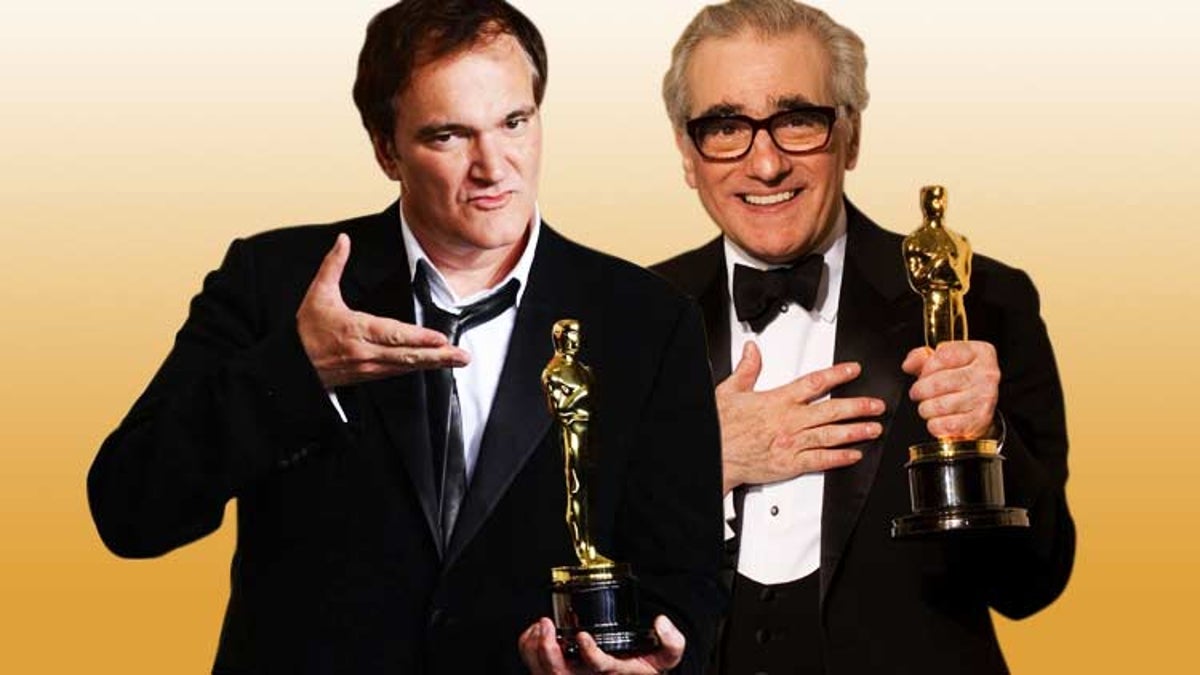






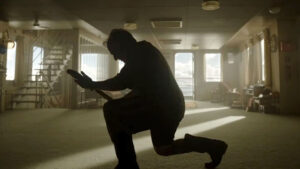

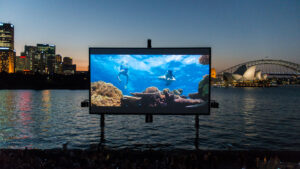
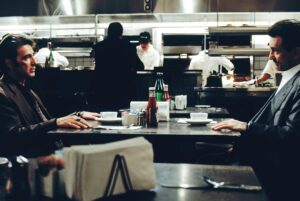



![[INTERVIEW] 'F1' Director Joseph Kosinski On The Upside Of Streaming & Sequels Starring Tom Cruise](https://www.bosshunting.com.au/wp-content/uploads/2025/12/INTERVIEW-F1-Director-Joseph-Kosinski-On-The-Upside-Of-Streaming-Sequels-Starring-Tom-Cruise-300x169.webp)
